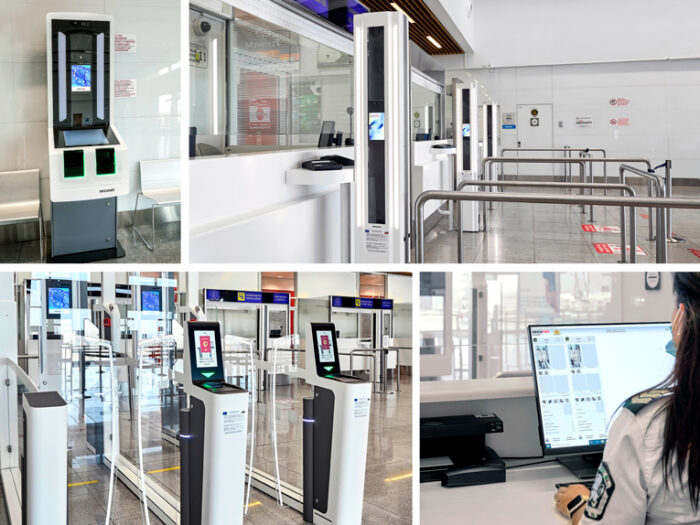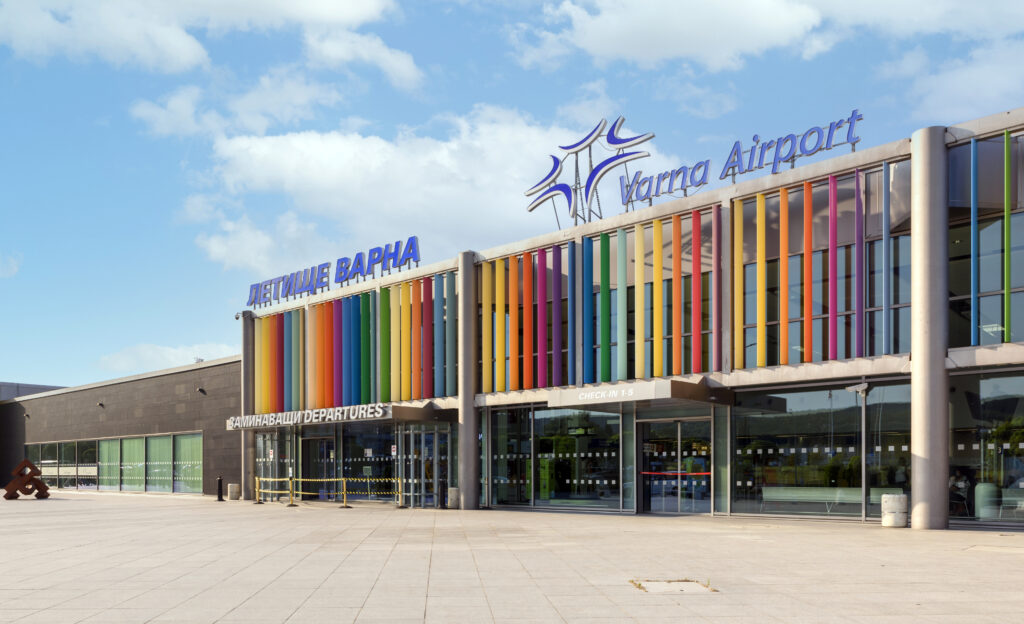Last year, Bulgarian IT systems integrator SSARM was awarded a major contract to equip the country’s aviation hubs with entry-exit system-compliant (EES) border control solutions following a tender by the Bulgarian Ministry of Interior.
SSARM has since installed a secure turnkey solution at Sofia, Varna and Burgas airports in cooperation with its German partner secunet. Bulgaria has thus become one of the first countries in Europe to comprehensively prepare its busiest air borders for the EU-wide EES initiative, long before its expected launch in May 2022.
Nikolay Dimchev, managing director of SSARM, discusses the project, its most interesting findings and the added value for passengers, border control and airports.
What exactly did you install at the airports in Varna, Burgas and Sofia and why?
The reason for implementing new border control systems is closely related to the EU’s decision to introduce the EES throughout the Schengen area in 2022. By taking facial images and fingerprints, all member states will in future know better which third-country nationals are entering the EU and ensure that individual passengers do not overstay. This enhances the security for all of us.
However, the integration of these additional process steps at primary border control threatens to cause a collapse if infrastructures remain unchanged, because clearance takes an average of 40-45 seconds longer – per passenger! Therefore, process automation at all possible steps, such as at stationary border control counters, is inevitable. The Ministry of the Interior therefore decided to comprehensively modernize the border control technology and commissioned us with the implementation. We then installed – in collaboration with our project partner secunet – ABC gates, self-service kiosks as well as camera systems and fingerprint readers for the stationary counters at the three aviation hubs in Bulgaria. The technologies fulfil very different functions and are sometimes intended for different passenger groups – but all technologies together will noticeably speed up the border control process and greatly reduce the workload of the responsible officers.
Why did you decide to bring secunet on board as a partner for the EES implementation?
We have been working with secunet in the area of high-security technologies for a long time and it has consistently proven to us in previous projects that the quality of its products is not only right, but comprehensively meets the requirements of our customers. The experts at secunet simply understood the processes and requirements on the customer side well and implemented them respectively in its products. That’s why we also contacted secunet for the EES project. Although we are in an excellent position ourselves as system integrator who is very familiar with the Bulgarian market, we don’t have our own product portfolio in this area.
We were also convinced by the EES solutions from secunet: they deliver EES-compliant biometric solutions, that assure the best possible quality of the biometric capture and are designed to be highly resistant to circumvention and forgery. This is extremely important, especially for unattended systems where the officer is not standing right next to them monitoring each passenger. Finally, all products have a very eye-catching, modern design – not to be underestimated considering today’s innovative airport architectures.

The modernization of the border control infrastructure was certainly a major investment. What advantages does it bring for passengers, airports and border control?
The benefits are quickly summed up: passengers – wherever they come from – now have access to automation technologies at the Bulgarian airports in Sofia, Varna and Burgas. If you like, they have at least a part of their border crossing in their own hands. Thanks to intuitive user guidance and innovative security mechanisms, passengers can be sure that their data will be captured quickly and is processed securely and in accordance with data protection regulations. The high-quality biometric acquisition is of course especially important for the border police. The officers are moreover ideally supported by the technologies and not put under additional strain. And the airports benefit from the fact that despite more extensive border control processes, which actually take more time, there are no significantly longer queues and missed connecting flights. In short: With automation and process optimization, we have ensured that time limits and the increasing number of passengers under “EES operations” can also be thoroughly and securely absorbed.
What are your most important insights from this EES project?
Actually, we were confronted with the same challenges in the EES project as in almost every IT project: when things become more concrete than a description on paper, it is not uncommon that new or changed requirements arise from the customer side that have to be implemented in the running project at short notice. This is completely normal, and we can deal with it very well.
In the case of the EES installations, for example, we installed the most modern, secure products and had to realize that this alone was not enough. Border control projects are about more than “just” installing technologies. The products should optimize passenger processes and fit perfectly into the respective environment and infrastructure, which is different at every airport and at every land border. This was an important and new insight for us. In this specific case, we also have integrated functional enhancements into the current project that were not planned beforehand. The installation of glass walls between stationary and automated border control or the construction of racks for the fingerprint scanners, which otherwise would not be perfectly positioned for the passengers, are small examples. Fortunately, together with secunet, we were able to offer all new customer requirements quickly and as needed, integrated them into the project implementation and still delivered on time.
Another important insight yet certainly not new is: You must react flexibly right up to the end and remain focused on details if you want installations that fit perfectly and are also visually attractive.
Are there further points you would like to highlight?
The EES installation was our first border control project, our premiere, so to speak. We are proud and relieved that we fulfilled the task to the fullest satisfaction of the Bulgarian Ministry of the Interior. Having secunet’s people on board, who are very experienced, was of course an enormous advantage for us. In times of this pandemic, we learned a lot together and supported each other in the best possible way, even if we were forced to do so “remotely” for most of the project. Through this perfect collaboration, we succeeded in implementing the installations on time and achieving the customer’s declared goal: Bulgaria is one of the first countries in the EU to be equipped with an EES-compliant overall solution at the three aviation hubs, long before the official launch of the EES. We are proud of this.


